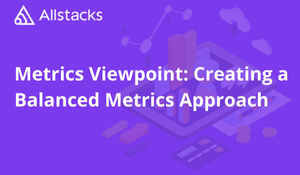Process Metrics
When measuring your development process, you'll want to track team velocity to understand how much work is completed in each sprint. Cycle time and Dora Lead Time are great indicators looking at the 360 degree of the process. The power of these is to reveal bottlenecks in your workflow that might be frustrating your engineers and slowing delivery. These metrics help you answer: "How efficiently are we moving work through our pipeline?"
Figure 1- Cycle Time
Note: The cycle time chart shows that most software issues are completed within the first 0-2 days with some outliers at 30+ days. This looks very healthy, but we should take a look at the outliers to determine what corrective action could be taken.
Code Metrics
Your codebase itself tells an important story. Tracking the number of commits and active pull requests shows development activity levels across teams and projects. Code comments and documentation quality are crucial indicators of maintainability and knowledge transfer effectiveness. Well-documented code reduces onboarding time for new developers and minimizes the "tribal knowledge" problem when team members leave. Deploy frequency indicates how often you're delivering value to users. Code complexity and technical debt measurements highlight areas that may become maintenance problems later. By analyzing trends in these metrics, you can spot potential issues before they grow into major obstacles, answering the question: "How healthy is our codebase?"
Figure 2- Code Comments
Note: The code comments seem to be very healthy, both historically and as a trend with comments up nearly 50%. There are 2 observations 1) With comments up, code is likely more easily supported going forward and 2) Some weeks have limited comments meaning there may be a conflict impacting this task - we should talk to the teams to see what’s up.
Quality Metrics
Quality directly impacts user satisfaction and maintenance costs. Change failure rate shows how often deployments cause incidents. Defect density reveals problem areas in your code. Unit test coverage, automated test pass rates, and static code analysis findings help ensure you're catching issues before they reach production. SLA adherence demonstrates reliability to customers. These metrics drive improvements in testing practices and code quality policies, helping you answer: "How reliable is our software?"
Figure 3- DORA
Note: There are 2 quality metrics in Dora - 1) Change failure rate in this case identifying ANY escaped bugs seems to be healthy, perhaps though put a focus on only critical bugs instead of any. 2) Time to restore is longer than expected, but could be affected by the inclusion of lower priority defects in the data set. Again, focus on critical to determine if that set is being properly handled.
Investment Intelligence
AllStacks' Investment Intelligence addresses a fundamental challenge for engineering leaders - understanding if planned work aligns with actual development activities. By comparing roadmap items and sprint commitments against actual code commits and pull requests, it reveals significant gaps between intent and execution. This visibility exposes scope creep, unexpected technical debt work, or shifting priorities that weren't properly communicated.
When engineering leaders can see these discrepancies early, they can have data-backed conversations with their teams about where time is being spent. It enables better resource allocation decisions and helps manage stakeholder expectations more effectively. The real value comes from transforming complex engineering data into clear insights without manual analysis, answering critical questions like: "Are we working on what matters most?" and "Where are our engineering resources actually being spent?"
Figure 4 - Investment Intelligence - Macro View
Note: In this macro view of the intended engineering focus and investment, there is a target of 75% for product and features which is clearly on track indicating a very healthy set of focus on the intended product roadmap for the past 180 days.
Figure 5 - Investment Intelligence - Detailed View
Note: Although the intelligence macro view showed very clear potential intended focus, this detailed view is telling a significantly different story. While there are 2 clear portfolio projects getting the largest investment and attention. There are substantial interruptions to the goals. These interruptions do seem to be feature focused, but they are NOT the intended feature focus. We need to have a detailed discussion between the product leadership and engineering leadership to reduce these costly interruptions and context switches.
Bringing It All Together
The true power of a metrics program emerges when you connect data across all these dimensions. For example, you might discover that low process efficiency correlates with specific code quality issues, or that investment misalignment is causing quality problems. With this comprehensive view, you can make truly informed decisions about improving your entire software delivery pipeline and create a metrics-driven culture that continuously optimizes delivery.

Written By:





